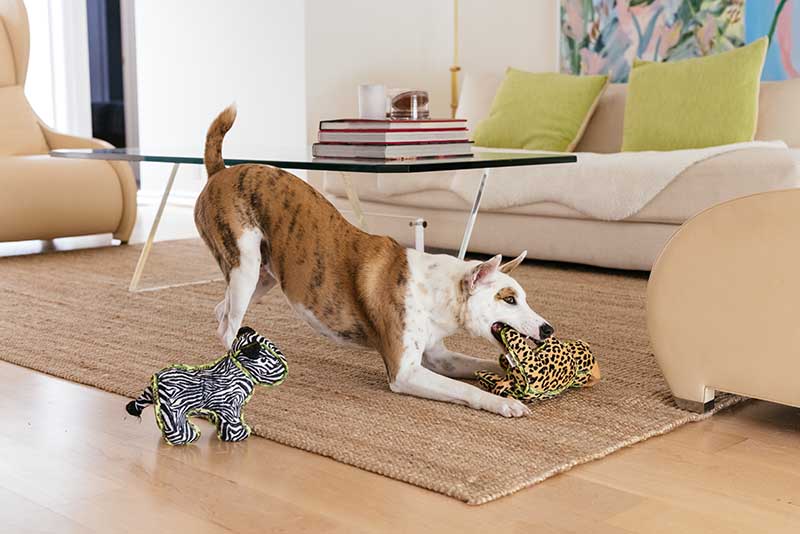Crate Training a New Puppy
You just brought home your new puppy. While he’s as adorable as can be, he’s also running around, going potty all over your house, and seems like he’s anxious. You’re interested in crate training him to hopefully address some of these issues. You want to ensure he’s happy and comfortable, no matter what.
Here is some crucial information on why crate training is important, as well as what steps to take to properly crate train your new pup.
Why You Should Crate Train

There are a number of reasons crate training is beneficial to young puppies. First, dogs love to be in small spaces because it makes them feel protected. Their crate is a safe place for them to hang out whether they are sleeping, playing with a toy, or trying to get away from a chaotic situation.
Additionally, there are times in your new puppy’s life when he needs to be in a crate for practical purposes. For instance, if you’re taking him in the car, you may want to crate him for his protection. If he’s running loose in the car, then you’ll likely be distracted and you could end up getting into a car accident.
If you go to the vet or need to take your dog on a plane, you’ll have to crate him or put him in a carrier. When taking your dog to get a haircut or to a boarding facility, he will have to be crated then, too.
Should your dog ever need surgery, then he can recover faster if he’s able to relax in his crate, especially if his movements need to be restricted. It could also be helpful if he’s sick and contagious and has to stay away from other pups in your home.
Crating will also help with separation anxiety. You can put your new dog in his safe place with a comfortable bed and cozy blanket, as well as his favorite toy, like a kong stuffed with peanut butter, a mentally stimulating dog puzzle, or some other chew toy that will keep him occupied. Then, he should be able to cope much better.
Crate training a puppy is also critical when it comes to house training him. It’s a potty training essential! Since dogs don’t like to go to the bathroom where they sleep, your dog will learn to hold it until you let him outside.
How to Crate Train a Puppy
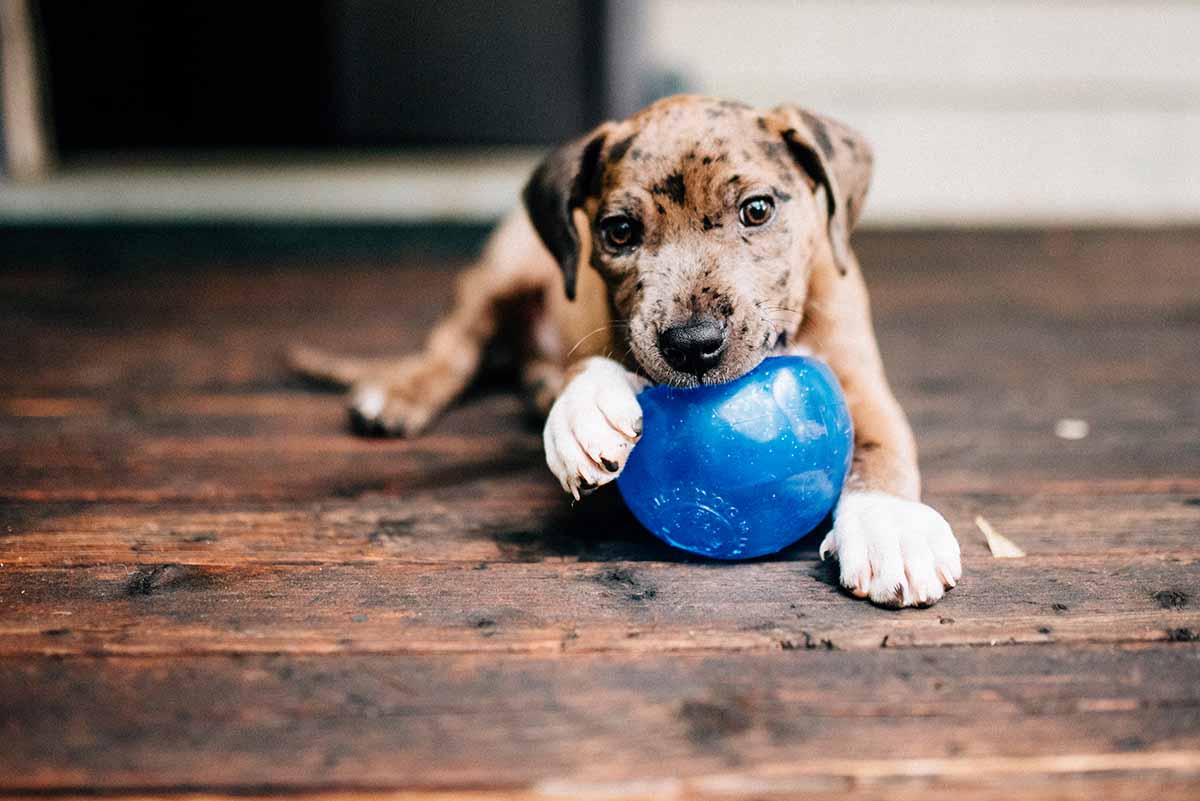
Now that you know all the advantages of crate training, you’re ready to start diving into the crate training process. Here are the training steps you’ll need to take.
Choosing a Crate
You’ll need to first buy a crate for your new puppy. You could try an airline or kennel-style crate so that your dog is more enclosed. These crates will be darker as well. However, many dogs do well with a collapsible wire crate. To make your new puppy feel more enclosed, you can simply cover part of it with a blanket when you let your puppy sleep at night time.
The Humane Society recommends a crate that is big enough so that your dog can get up and turn around, but not so big that he doesn’t feel like it’s a safe place. Wire crates are useful because many of them come with dividers. This means that you can make the crate small when your dog is a new puppy, and then as he becomes an adult dog, you can take out the divider to make it bigger.
What to Look for in a Crate Bed

When training a dog to use a crate, you’ll want a bed that is versatile and easy to clean.
The crate mat with bolster dog bed is made with a waterproof coating around the foam pad to prevent messes from seeping into the base. The faux fur cover is also removable, making it simple to unzip and toss into the washing machine.
Your dog’s crate is their safe space. Give them a crate pad that elevates a simple crate into a cozy den they look forward to resting in.
Your pet will be enveloped in luxuriously soft warmth from the faux fur fabric and CoziLOFT bolster, creating a calming sensation that allows for more comfortable, temperature-regulated rest. The bolster feature provides a sense of security and allows for head and neck support, and the CertiPUR-US mat provides orthopedic comfort.
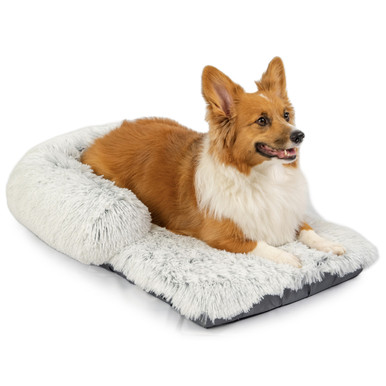
Nap Mat Crate Dog Bed with Bolster, Frost, 30X19
The Best Friends by Sheri Bolster Nap Mat crate dog bed is made of self-warming vegan faux fur material that is reminiscent of a mother’s fur coat. Inspired by the best-selling original calming donut dog bed, the dog bed with bolster fits inside dog crates and features a raised rim that provides the same sense of security and head and neck support. Crate training is easier when your pet’s space is a cozy…
Using the Crate
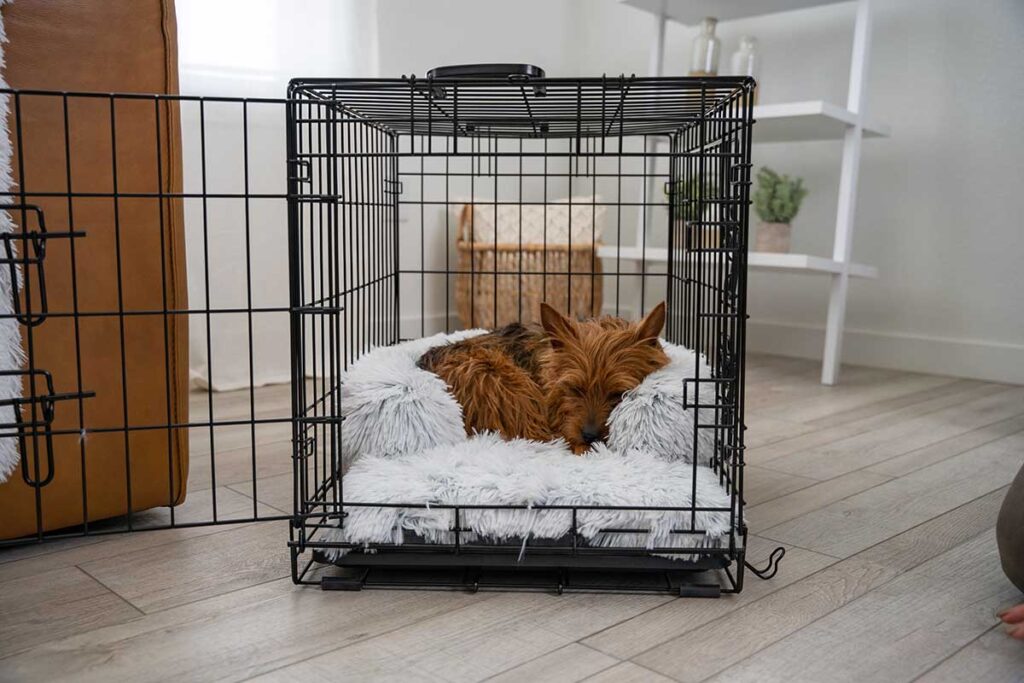
Next, take your dog to his crate when he’s calm, and not when it’s playtime. Teach him during dog training sessions that crate time does not equal playtime. If he’s hyper when he goes in, he will likely want to come out right away. The amount of time you put him in there should be short at first. Then you can work your way up to longer periods.
For instance, you may want to put him in his crate for 10 minutes the first time. Then, slowly increase the amount of time he spends in there. If spending a longer length of time in there, take him out for a potty break when he needs it.
The rule of thumb is that for every month of age, your new puppy can hold his bladder for one hour. If he’s one month old, then he can hold it for an hour. If he’s two months old he can hold it for two hours, etc. Keep this in mind when housebreaking. The first night he’s in the crate, you may need to check on him and give him multiple potty breaks. Especially if he’s whining.
Make It a Positive Experience
Once your dog goes in, give him a treat so he has a positive association with his crate. You could say “good boy” and give him a pat on the head to make it a more positive experience. Then, close the crate door and let him explore his den.
As your dog gets older, you can increase the amount of time he is in the crate. Usually, crate training will take at least six months, so you just need to be patient. You can always hire a dog trainer to come and help you out if the crate training process is proving to be difficult.
Where to Place Your Dog’s Crate
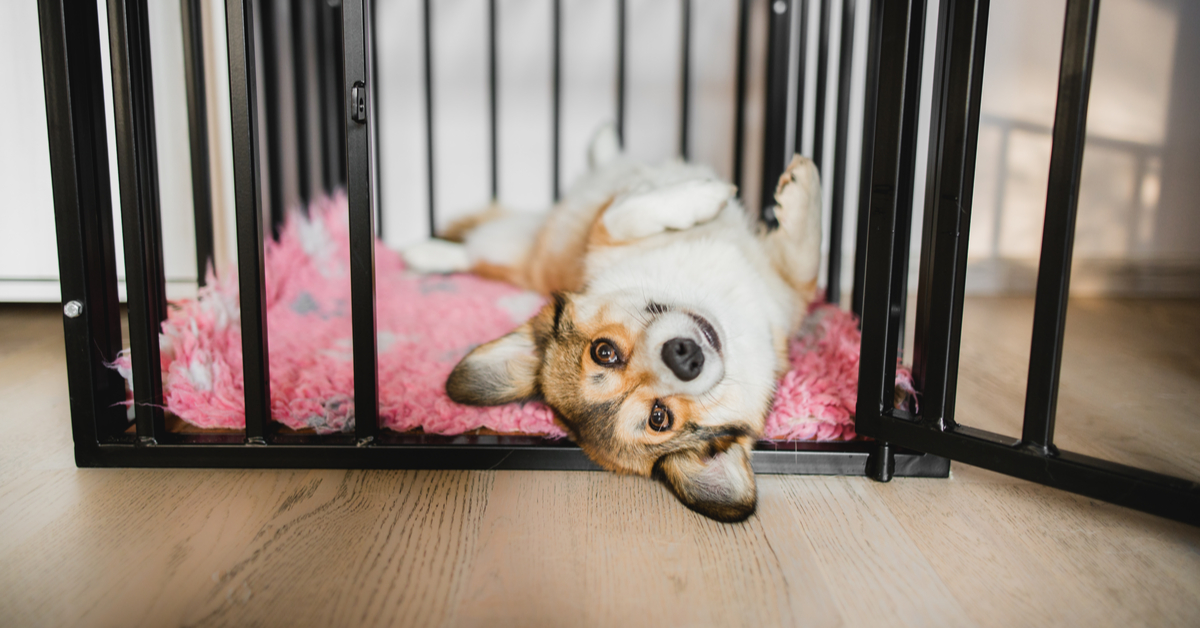
You can put your dog’s crate in a place where he can get some quiet time. A guest room that no one is using or an office. You can also put it in the family room or the living room where he can be around loved ones.
If your dog is prone to anxiety, especially if he gets anxious around people, then a quieter place is going to be your best bet. When your first bring home your new puppy, you can put the crate in your room so that you can take your furry family member out for potty breaks as needed.
Never Use the Crate as Punishment
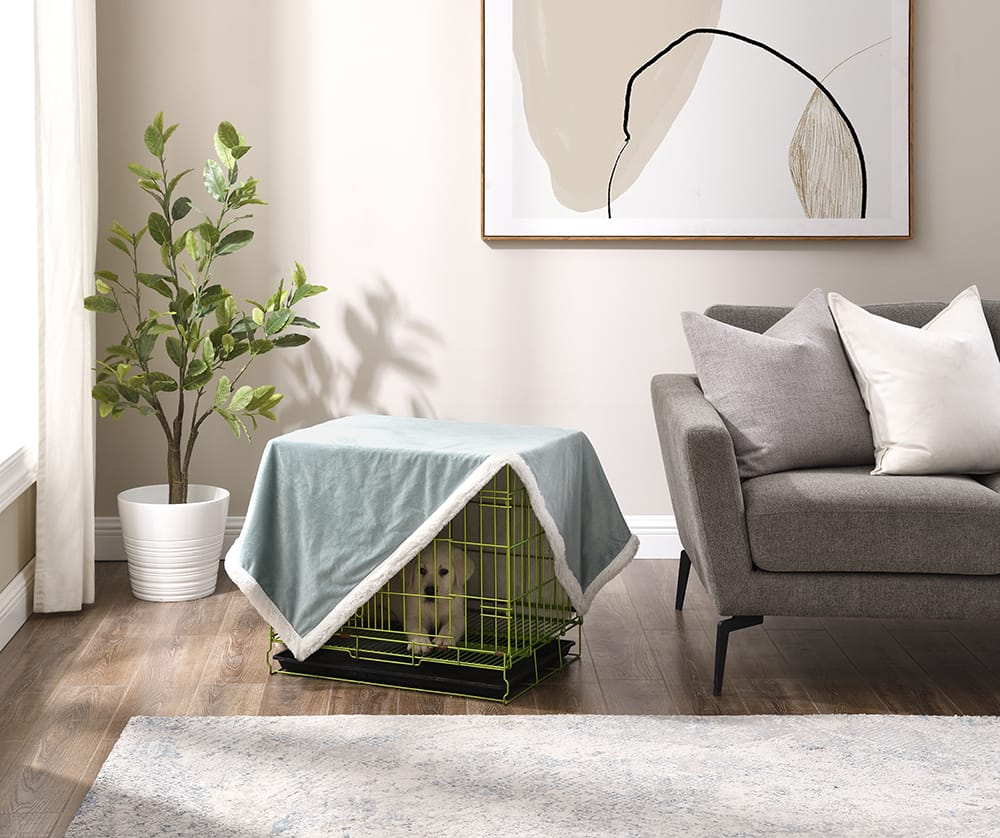
Keep in mind that you should never use the crate as a punishment. Your dog may become scared of it and not want to go in. Your puppy needs to have a positive association with it, and this will hinder that progress.
No matter how old your dog is – whether he’s a new puppy, an adult dog, or older dog – he shouldn’t spend all day long in his crate. Even if he can hold his bladder, he should not be in there for a long period of time. He needs exercise and human interaction and could have behavioral issues, depression, or anxiety if he doesn’t get out enough.
You can also watch your dog on camera when you’re gone for the day to see when he gets anxious or nervous inside of his crate. Then, you’ll know how long he can be in it before problems start happening. If he pees in his crate, you can also figure out how long he can hold his bladder so that you can more effectively potty train him.
Making Crate Training a Success
When it comes to crate training, it could take a good amount of time and small steps before your dog begins to love his crate and his new home. But once he does, he’ll likely start going into it on his own, which will make your life – and his – a lot easier.
 Amazon
Amazon